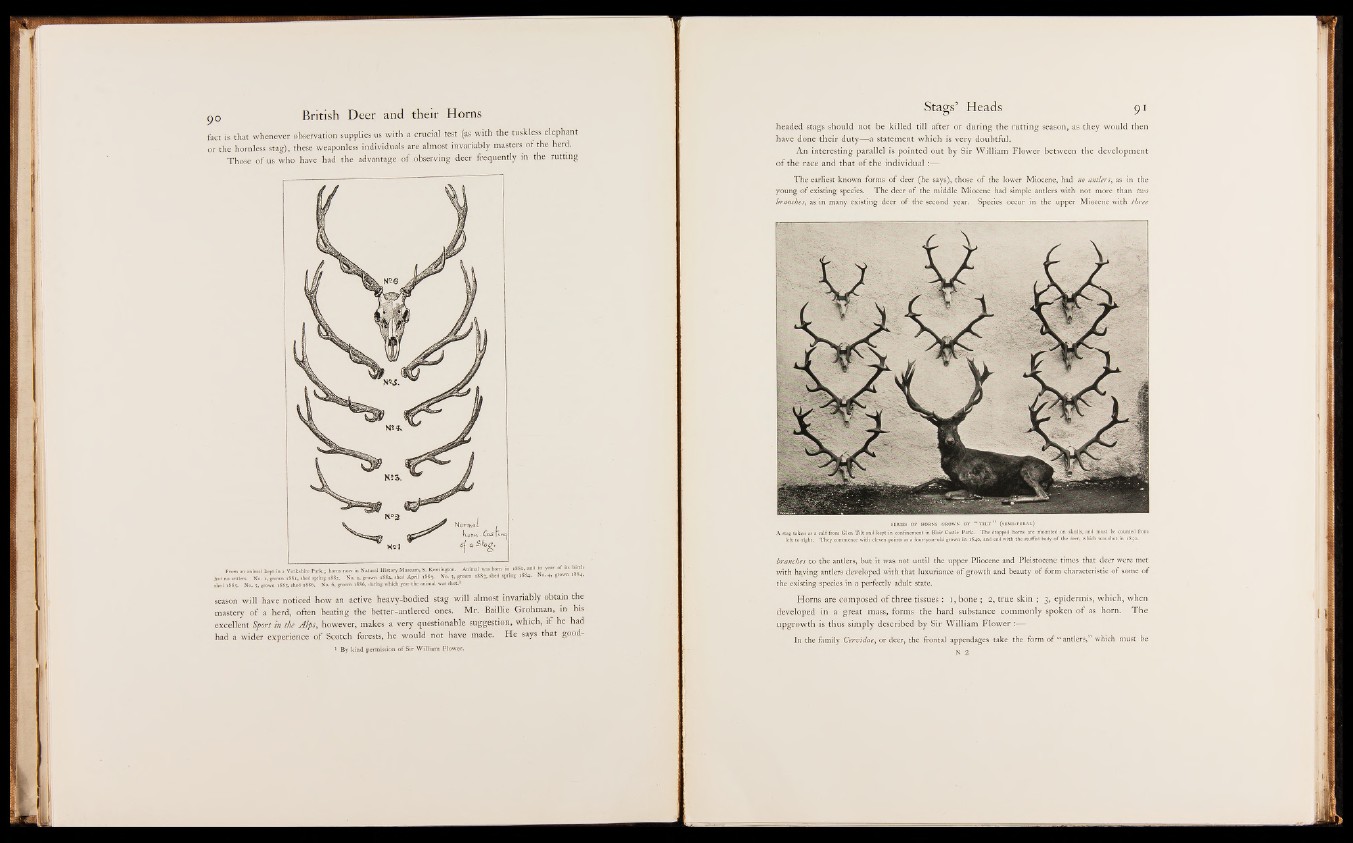
fact is that whenever observation supplies us with a crucial test (as with the tuskless elephant
or the hornless stag), these weaponless individuals are almost invariably masters of the herd.
Those o f us who have had the advantage o f observing deer frequently in the rutting
season will have noticed how an active heavy-bodied stag will almost invariably obtain the
mastery o f a herd, often beating the better-antlered ones. Mr. Baillie Grohman, in his
excellent Sport in the A lps, however, makes a very questionable suggestion,'which, i f he had
had a wider experience o f Scotch forests, he would not have made. He says that good-
1 By kind permission of Sir William Flower.
headed stags should not be killed till after or during the rutting season, as they would then
have done their duty— a statement which is very doubtful.
An interesting parallel is pointed out by Sir William Flower between the development
o f the race and that o f the individual :—
The earliest known forms of deer (he says), those of the lower Miocene, had no antlers, as in the
young of existing species. The deer of the middle Miocene had simple antlers with not more than two
branches, as in many existing deer of the second year. Species occur in the upper Miocene with three
c y ^ X
C
§p1 SHiI L 111
Hj K §i».
SERIES OF HORNS CROW]
; Park. The dropped horns are mounted on skulls, and must be counted from
n in 1S40, and end with the stuffed body of the deer, which was shot in 1850.
A stag taken as a calf from Glen Tilt anil kept in confinement in Blair Castli
left to right. They commence with eleven points as a four-year-old grow
branches to the antlers, but it was not until the upper Pliocene and Pleistocene times that deer were met
with having antlers developed with that luxuriance of growth and beauty of form characteristic of some of
the existing species in a perfectly adult state.
Horns are composed o f three tissues : i , bone ; 2, true skin ;, 3, epidermis, which, when
developed in a great mass, forms the hard substance commonly spoken o f as horn. The
upgrowth is thus simply described by Sir William Flower
In the family Cervidae, or deer, the frontal appendages take the form of “ antlers,” which must be